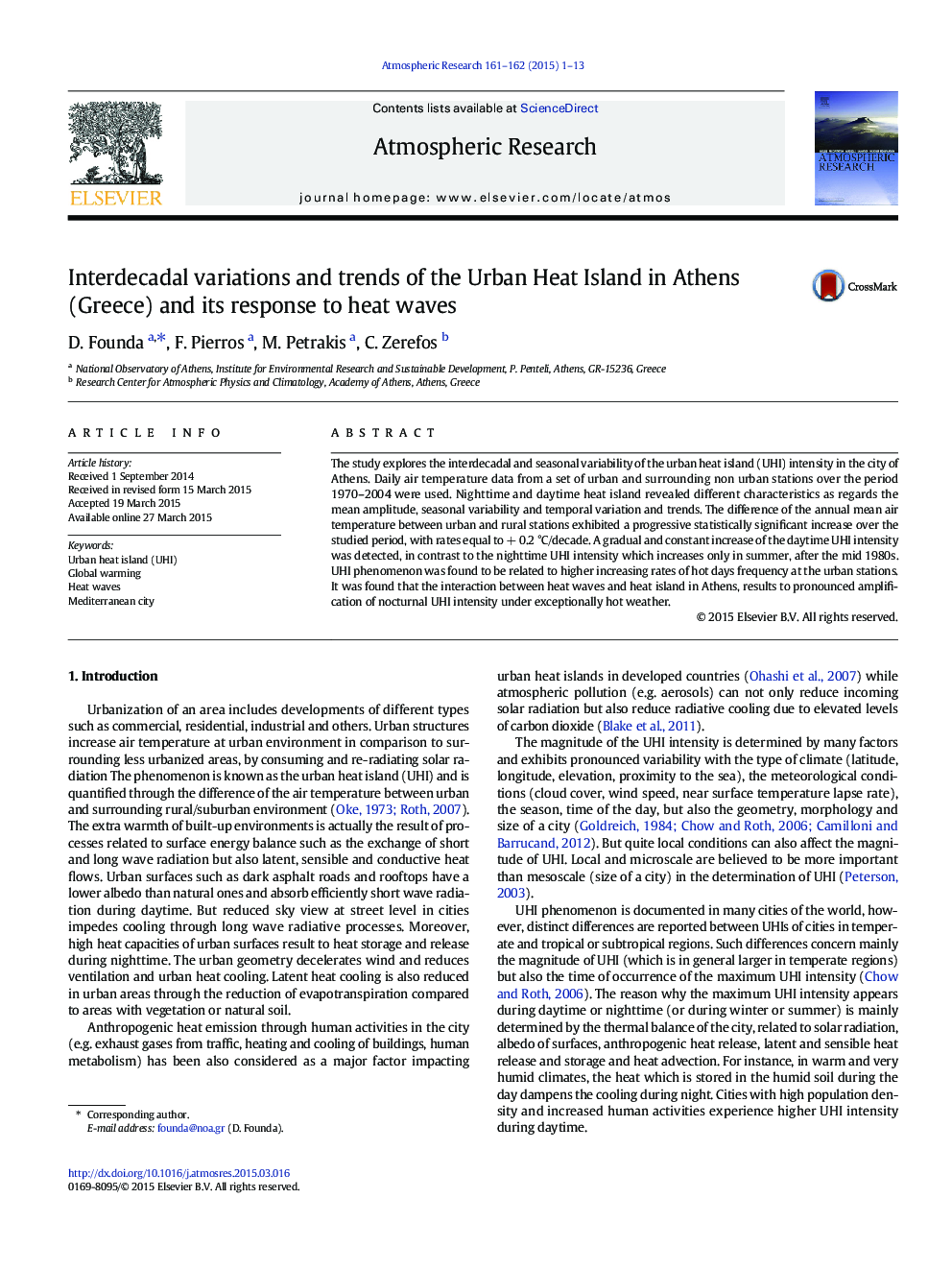| Article ID | Journal | Published Year | Pages | File Type |
|---|---|---|---|---|
| 4449659 | Atmospheric Research | 2015 | 13 Pages |
•The seasonal and temporal variability and trends of UHI in Athens was studied.•UHI accounts for almost half of Athens' warming.•Nocturnal and daytime UHI reveal different patterns.•UHI increased hot days frequency.•Heat waves amplify UHI intensity during night time.
The study explores the interdecadal and seasonal variability of the urban heat island (UHI) intensity in the city of Athens. Daily air temperature data from a set of urban and surrounding non urban stations over the period 1970–2004 were used. Nighttime and daytime heat island revealed different characteristics as regards the mean amplitude, seasonal variability and temporal variation and trends. The difference of the annual mean air temperature between urban and rural stations exhibited a progressive statistically significant increase over the studied period, with rates equal to + 0.2 °C/decade. A gradual and constant increase of the daytime UHI intensity was detected, in contrast to the nighttime UHI intensity which increases only in summer, after the mid 1980s. UHI phenomenon was found to be related to higher increasing rates of hot days frequency at the urban stations. It was found that the interaction between heat waves and heat island in Athens, results to pronounced amplification of nocturnal UHI intensity under exceptionally hot weather.
